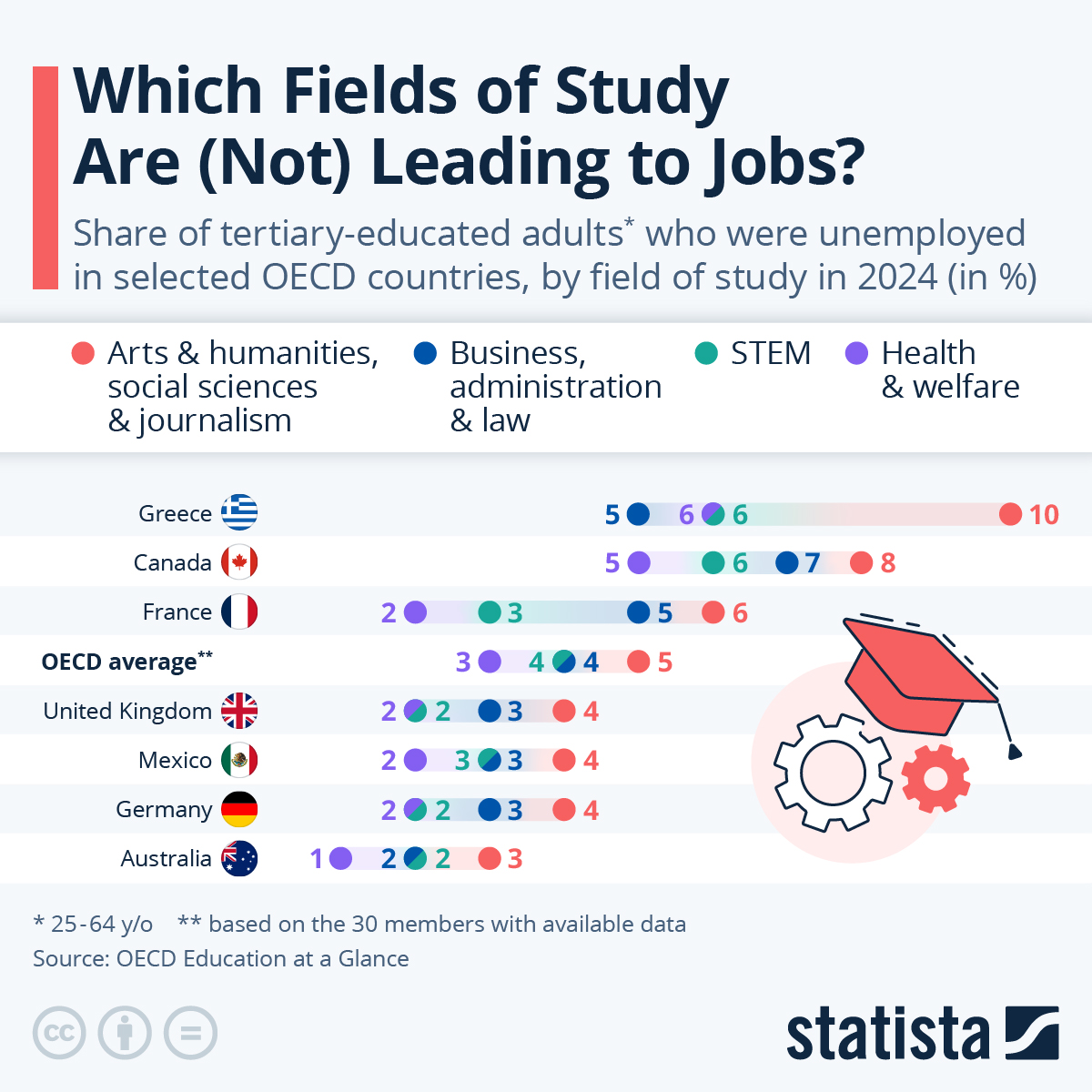
Какие области обучения (не) ведут к работе?
Даже высокообразованным выпускникам трудно найти работу в современном сложном экономическом климате. Это означает, что все более важно, чтобы молодые люди приобретали навыки через образование, которое соответствует требованиям рынка труда.
В новом докладе ОЭСР «Образование глазами» подробно рассматривается этот вопрос.
Как Анна Статиста Флек показывает в приведенной ниже инфографике, что, хотя высшее образование обычно приводит к повышению уровня занятости, результаты, как правило, варьируются в зависимости от области обучения. В 2024 году у выпускников ИТ был самый высокий средний уровень занятости в странах ОЭСР — 90 процентов, за ними следуют инженеры, производители и строители — 89 процентов. Между тем, выпускники в области искусств и гуманитарных наук, социальных наук и журналистики имели самые низкие показатели. 84%. Данные охватывают занятость среди взрослых в возрасте от 25 до 64 лет.

В Statista вы найдете больше инфографики
Хотя различия могут показаться незначительными, аналитики отмечают, что эта модель является последовательной в разных странах.
Например, в Великобритании, Мексике, Германии и Австралии уровень безработицы среди выпускников в области здравоохранения и социального обеспечения колебался в пределах одного-двух процентов. Выпускники STEM также имели низкую безработицу.
В отличие от этого, в Греции выпускники бизнес, администрирование и юриспруденция показали несколько лучшие результаты в области занятости, чем в области искусства или STEM.
В докладе подчеркивается, что Наличие любого вида высшего образования имеет тенденцию улучшать перспективы трудоустройства. Но это также подчеркивает постоянный разрыв в возможностях, поскольку во всех изученных странах студенты из неблагополучных слоев населения гораздо реже достигают более высокого уровня образования, чем студенты из более привилегированных слоев населения. Аналитики утверждают, что улучшение доступа к образованию в различных социально-экономических условиях имеет решающее значение не только для укрепления социальной мобильности и сокращения неравенства, но и для увеличения пула квалифицированных работников во время нехватки навыков во многих секторах.
Тем не менее, данные, показанные в инфографике выше, имеют оговорку.
Хотя исследование проводилось совсем недавно, в прошлом году, Ландшафт занятости, особенно в технологической отрасли, быстро развивается из-за широкого внедрения ИИ.. Особенно это касается тех, кто только начинает работать. Например, поскольку компании все больше полагаются на помощников по кодированию ИИ, спрос на такие роли, как младшие программисты, снижается. И хотя новые технологии исторически в конечном итоге создали новые типы рабочих мест, сегодняшние выпускники попадают в переходный период, сталкиваясь с меньшим количеством немедленных открытий по мере адаптации рынка.
Тайлер Дерден
Мон, 09/15/2025 - 20:05








